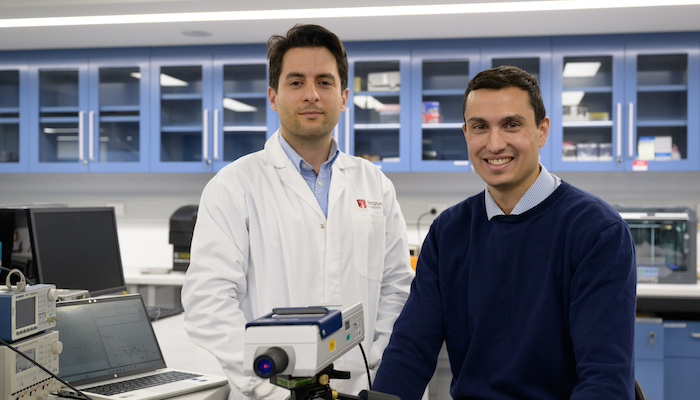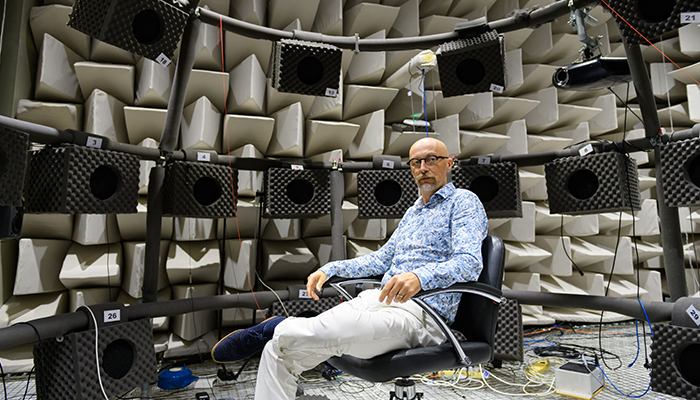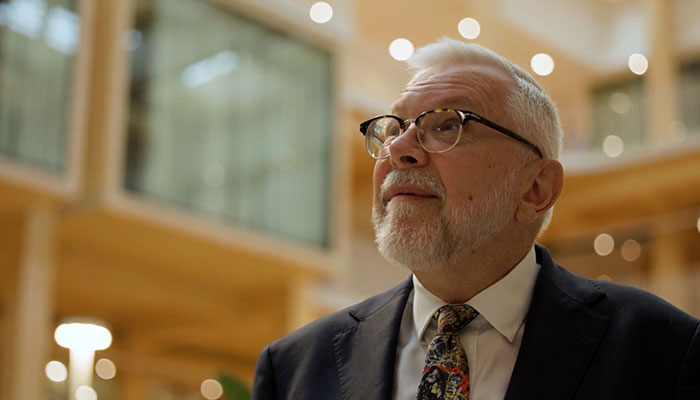One in three of us will be affected by a balance disorder during our lifetime, which could involve anything from a fleeting dizzy spell or occasional faintness to more serious episodes of disturbed vision and crippling vertigo, where the world seems to spin around you.

Diagnosing the cause of a balance problem can be tricky; more than half of these begin in the vestibular system in our inner ear, responsible for fast-forwarding signals about our stability from our eyes, ears and muscles to the brain.
But new and more accurate tests to identify balance problems could now be on the horizon, following research led by Macquarie University that has been published in the Journal of Neuroscience. The research found the inner ear sends balance signals to the brain much faster than it sends hearing signals.
This research could potentially fast-track the development of an implantable bionic ear for balance – a device using electrical impulses to trigger inner-ear balance mechanisms similar to the way cochlear implants stimulate the hearing nerve.
Led by Dr Christopher Pastras, from Macquarie University’s School of Engineering, the study tested the speed at which different inner-ear sensory neurons respond and recover from mechanical and electrical stimulation, and found the balance response is one of the fastest pathways in a mammal’s nervous system.
Other members of the multi-disciplinary research team included Professor Mohsen Asadnia from Macquarie University’s School of Engineering, Honorary Professor Ian Curthoys and Distinguished Professor David McAlpine, both from Macquarie University Hearing, neurophysiologist Dr Daniel Brown from Curtin University, and Professor Richard Rabbitt, a bioengineer from the University of Utah, USA.
Balance Bottleneck
“Balance works with senses like touch and sight to give us a good idea of how we are moving, and it does this by converting mechanical signals into electrical signals that the brain can understand through a very fast and sensitive process called mechano-sensation,” says Dr Pastras.
“These signals are then converted through the ear’s hair cells and sensory neurons into electrical impulses that reach the brain – a process that could be a potential bottleneck, slowing the signal,” he says.
The researchers found the balance system has a way to get around this bottleneck via the ear’s most sensitive vestibular neurons, which use a type of electrical signalling called nonquantal transmission.

Multi-disciplinary collaboration: Professor Mohsen Asadnia, pictured left, and Dr Christopher Pastras, pictured right, from the Macquarie School of Engineering joined colleagues from Macquarie Hearing in the research project.
This type of transmission is significantly faster than the usual way that neurons communicate, which is via chemical neurotransmitter release.
They used laser doppler vibrometry – a non-contact instrument that accurately measures tiny vibrations of different surfaces, in this case, structures within the ear – to help measure the timing of this fast electrical signalling.
The study is the first to measure how long it takes for balance neurons to recover after being mechanically and electrically stimulated and helps to explain the speed and accuracy of our balance system – giving insight into how the balance system controls our vision and movement so well.
How this research could improve testing and diagnosis
Balance problems caused by vestibular system damage affect up to 30 per cent of older Australians, according to Neuroscience Research Australia, and can be caused by genetic factors, antibiotics, trauma, viruses and other conditions, including Parkinson’s Disease and Ménière's Disease.
Discovering that the inner ear has different ways of sending signals to the brain for hearing and balance means that scientists can now design new and more accurate tests to measure balance problems without confusing them with hearing problems.
This research provides important clues for developing and improving implantable devices to restore or even enhance normal balance function, similar to cochlear implants for hearing.
Before this discovery, doctors largely relied on indirect tests, such as measuring reflexes and self-reports of dizziness, to diagnose balance disorders.
“Being able to distinguish neural responses of hearing and balance based on the speed at which these responses recover from prior stimulation could be an important additional element to the diagnostic toolbox,” says Distinguished Professor David McAlpine, Academic Director of Macquarie University Hearing.
Professor McAlpine says the findings are also important for the burgeoning field of regenerative medicine, where restoring sensory function after hearing loss is a considerable challenge to scientists and clinicians.
Many new approaches to restore the damaged inner ear to health use genetic or biological approaches, he said, adding that vestibular cells are more readily regenerated than those involved with hearing.

Advancement: the new study findings could lead to improvements in diagnosing balance disorders, says Distinguished Professor David McAlpine, pictured.
Dr Pastras says that although clinical trials have been done internationally on vestibular implants that use electrical impulses to stimulate balance nerves, the approach so far is fairly basic.
“Without a complete understanding of the neural code, implantable devices have had to take something of a sledgehammer approach using a single electrode."
He says this research delivers deeper insights into the ways finely tuned balance mechanisms in mammals respond to natural stimuli in the environment.
The team is investigating future opportunities to apply this research, Dr Pastras says.
“This research provides important clues for developing and improving implantable devices to restore or even enhance normal balance function, similar to cochlear implants for hearing,” says Distinugished Professor McAlpine.
Dr Christopher Pastras is a Research Fellow in the Macquarie University School of Engineering.
Professor Mohsen Asadnia is an academic in the Macquarie University School of Engineering.
Distinguished Professor David McAlpine is the Academic Director of Macquarie University Hearing.



